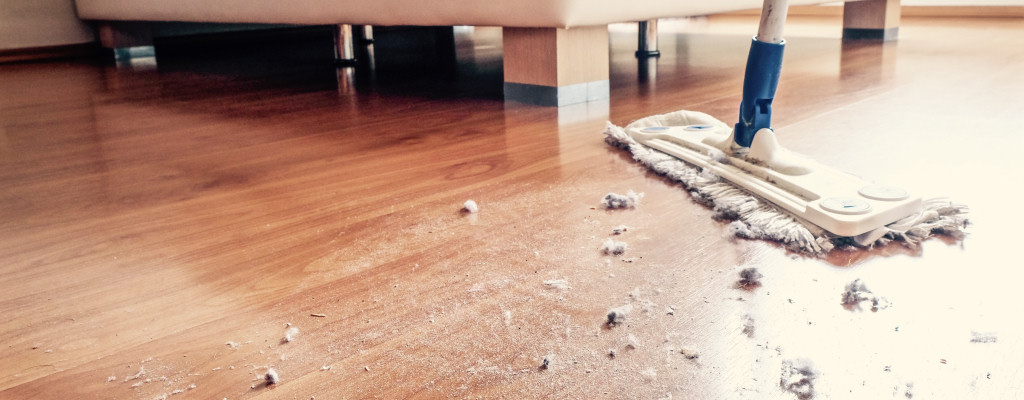Every home has dust, and nobody wants it. But, what exactly is it? Paraphrased from Wikipedia, “Dust is fine particles of solid matter. In homes, offices, and other human environments, dust contains small amounts of pollen, human and animal hair, textile fibers, paper fibers, minerals from outdoor soil, human skin cells, and many other materials found in the local environment.”
That’s a little wordy, but it’s also easy to see how dust can affect your home’s indoor air quality (IAQ), leading to allergens. We know how vital clean indoor air is for your home and your family.
This might surprise you, but the air in your home is typically dirtier than the air outside. You should take steps to reduce indoor pollution – both for your health and your home’s. Keep in mind, though, that eliminating dust from your home is an impossible task. Just by Wikipedia’s description alone, it’s easy to understand why it’ll always exist in your home. Fortunately, you can dramatically reduce your home’s dust levels by following our recommendations below.
Don’t neglect your filters
The purpose of your heating and cooling system’s air filter is to trap dirt, dust, and debris flowing through the system. Your home’s air is vented through the system and forced through the filter. Using the best filter available recommended by your system’s manufacturer, you will trap most of the dust and stop it from traveling through the air. Pay particular attention to a filter’s MERV (Minimum Efficiency Reporting Value), the measurement system implemented by the American Society of Heating, Refrigeration and Air-Conditioning Engineers (ASHRAE) to rate a filter’s efficiency and effectiveness. It’s also important to purchase filters with an appropriate MERV rating for your system.
Inspect your filter monthly and replace it regularly, depending on how quickly it accumulates dirt. Ideally, we recommend changing it every month, but at the very longest, every three months. When your filter is clogged, aside from potentially hurting your HVAC system, it can’t do its job of reducing the amount of dust in your home.
Inspect your air ducts
Your home probably has a forced-air HVAC system, which means you have air ducts carrying your home’s air to and from your system. If your ducts have leaks, unfiltered air sneaks out into your home. You could have as much as 30% air leakage due to poor sealing – air that hasn’t reached your filter and is spreading dust throughout your home.
It’s even worse if your air ducts are dirty. The air passing through the ducts picks up extra dust and dirt and distributes it throughout your home. If you see a consistently high level of dust in your home, we recommend calling in an expert to check your ducts’ seals and inspect for leaks. You should also consider getting your ducts cleaned, especially if you can’t remember when they were last cleaned (or they’ve never been).
Add an air purifier
Though eliminating the sources of dust in your home is the ideal approach, adding an air purifier will help your dust problem. A whole-home air purifier works with your home’s heating and cooling system to remove dust, allergens, and other particles and allergens from the air. Compared to small portable purifiers, a major benefit of a whole-home purifier is the fact that it purifies all of the air in your home at one time. Portable units only purify the air in the one room they’re in. You would need a separate portable purifier in every room of your home to achieve a similar result.
Check the humidity level
It’s crucial to ensure that your home has the appropriate level of humidity. If it’s too high, it encourages dust mites to multiply. Too low, and dust spreads and accumulates more easily. Ideally, keep it between 40% to 50% percent in the warmer months, and below 40% in the winter to avoid condensation.
Keep a tidy home
In addition to the HVAC system-focused steps you can take to reduce dust, cleaning your house will definitely help:
• Eliminate clutter, as it provides more surfaces for dust to collect on.
• Vacuum at least weekly, and use one with a HEPA filter if possible. Also, empty your vacuum’s bag or canister regularly, to prevent dust from recirculating into the air.
• Dust regularly with a microfiber or damp cloth to capture as much dust as possible, and always dust from top to bottom.
• Wash all of your bedding regularly – launder your sheets and pillowcases once a week, while blankets, duvets, and other linen at least once per month.
We know that dust is a nuisance as well as an allergen. If you notice higher-than-normal dust levels in your home, please call us to visit your home soon – we’ll do our best to get to the bottom of the problem and make your home and family comfortable once again. That’s how neighbors should treat neighbors!™


Comments are closed